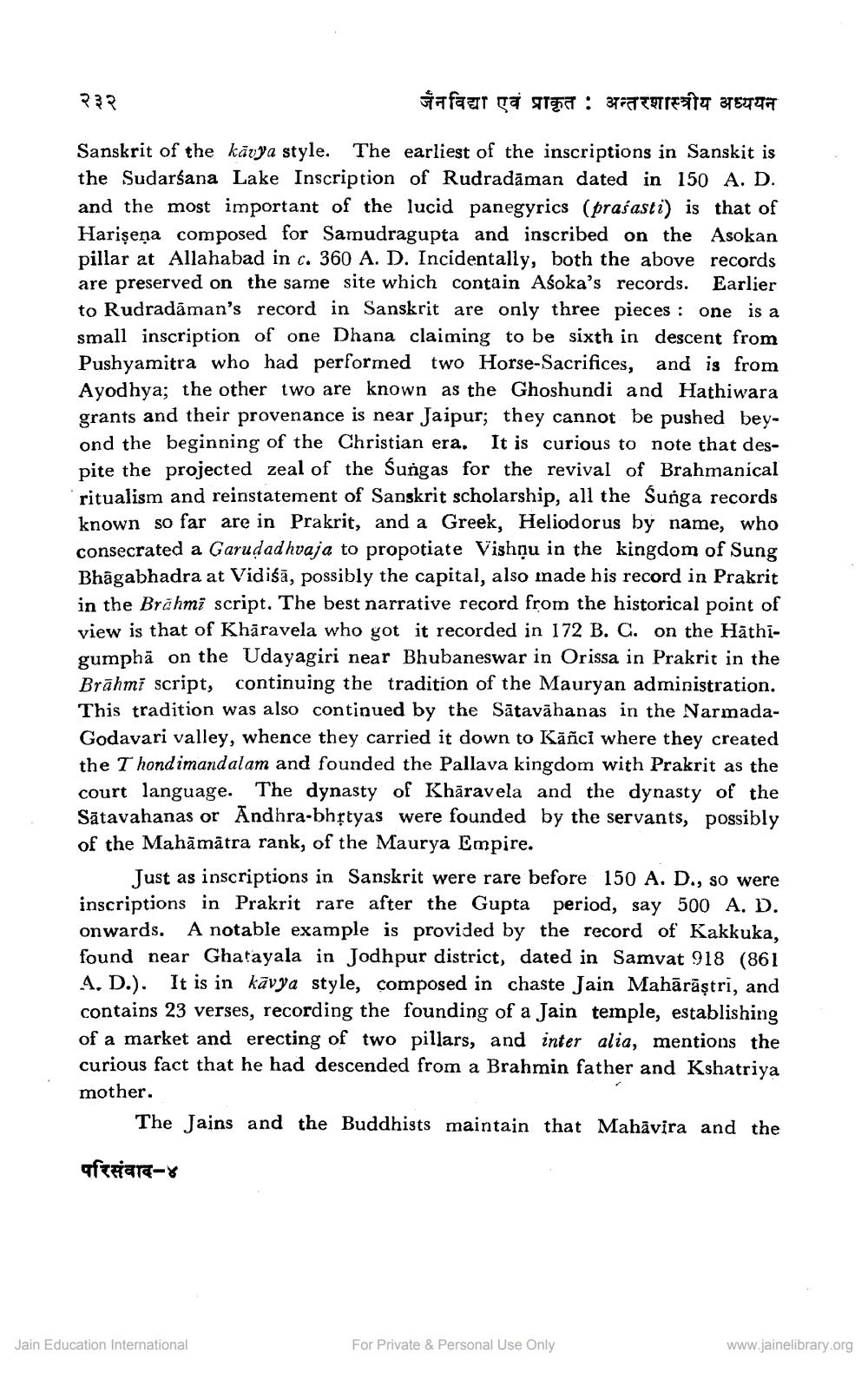Book Title: Prakrit A Review Author(s): Shashi Kant Publisher: Z_Jain_Vidya_evam_Prakrit_014026_HR.pdf View full book textPage 4
________________ २३२ जैन विद्या एवं प्राकृत : अन्तरशास्त्रीय अध्ययन Sanskrit of the kāuya style. The earliest of the inscriptions in Sanskit is the Sudarśana Lake Inscription of Rudradāman dated in 150 A. D. and the most important of the lucid panegyrics (prasasti) is that of Harişena composed for Samudragupta and inscribed on the Asokan pillar at Allahabad in c. 360 A. D. Incidentally, both the above records are preserved on the same site which contain Asoka's records. Earlier to Rudradāman's record in Sanskrit are only three pieces : one is a small inscription of one Dhana claiming to be sixth in descent from Pushyamitra who had performed two Horse-Sacrifices, and is from Ayodhya; the other two are known as the Ghoshundi and Hathiwara grants and their provenance is near Jaipur; they cannot be pushed beyond the beginning of the Christian era. It is curious to note that despite the projected zeal of the Sungas for the revival of Brahmanical ritualism and reinstatement of Sanskrit scholarship, all the Sunga records known so far are in Prakrit, and a Greek, Heliodorus by name, who consecrated a Garudad hvaja to propotiate Vishņu in the kingdom of Sung Bhāgabhadra at Vidiśā, possibly the capital, also inade his record in Prakrit in the Brahmi script. The best narrative record from the historical point of view is that of Khāravela who got it recorded in 172 B. C. On the Hathigumphā on the Udayagiri near Bhubaneswar in Orissa in Prakrit in the Brāhmi script, continuing the tradition of the Mauryan administration. This tradition was also continued by the Sātavāhanas in the NarmadaGodavari valley, whence they carried it down to Kāñci where they created the T hondimandalam and founded the Pallava kingdom with Prakrit as the court language. The dynasty of Khāravela and the dynasty of the Sātavahanas or Andhra-bhỉtyas were founded by the servants, possibly of the Mahāmātra rank, of the Maurya Empire. Just as inscriptions in Sanskrit were rare before 150 A. D., so were inscriptions in Prakrit rare after the Gupta period, say 500 A. D. onwards. A notable example is provided by the record of Kakkuka, found near Ghatayala in Jodhpur district, dated in Samvat 918 (861 4. D.). It is in kavya style, composed in chaste Jain Mahārāştri, and contains 23 verses, recording the founding of a Jain temple, establishing of a market and erecting of two pillars, and inter alia, mentions the curious fact that he had descended from a Brahmin father and Kshatriya mother. The Jains and the Buddhists maintain that Mahāvira and the परिसंवाद-४ Jain Education International For Private & Personal Use Only www.jainelibrary.orgPage Navigation
1 2 3 4 5 6 7
